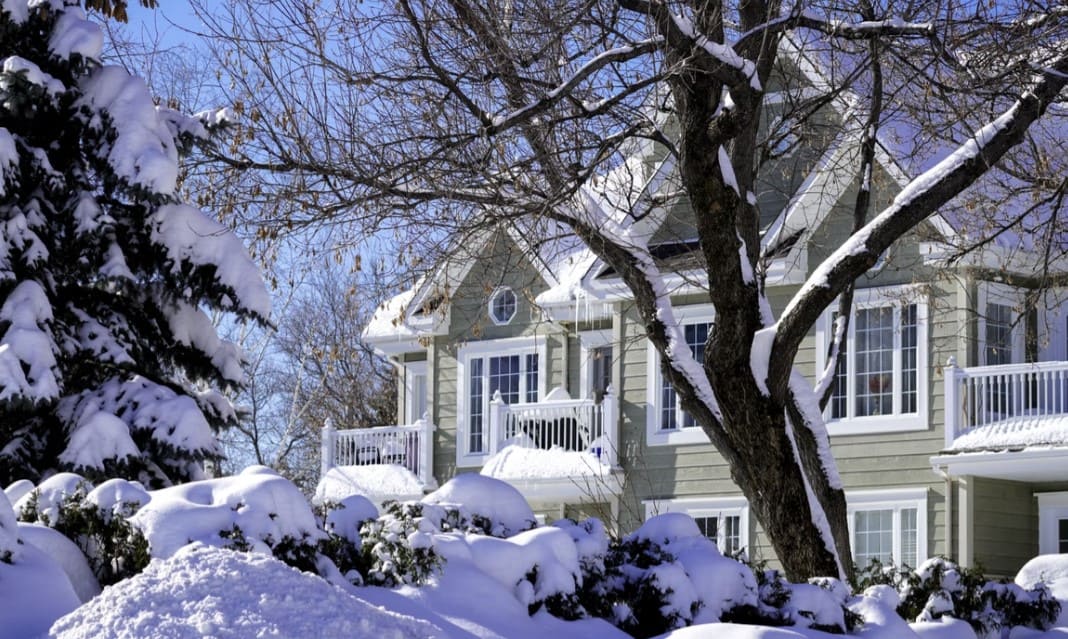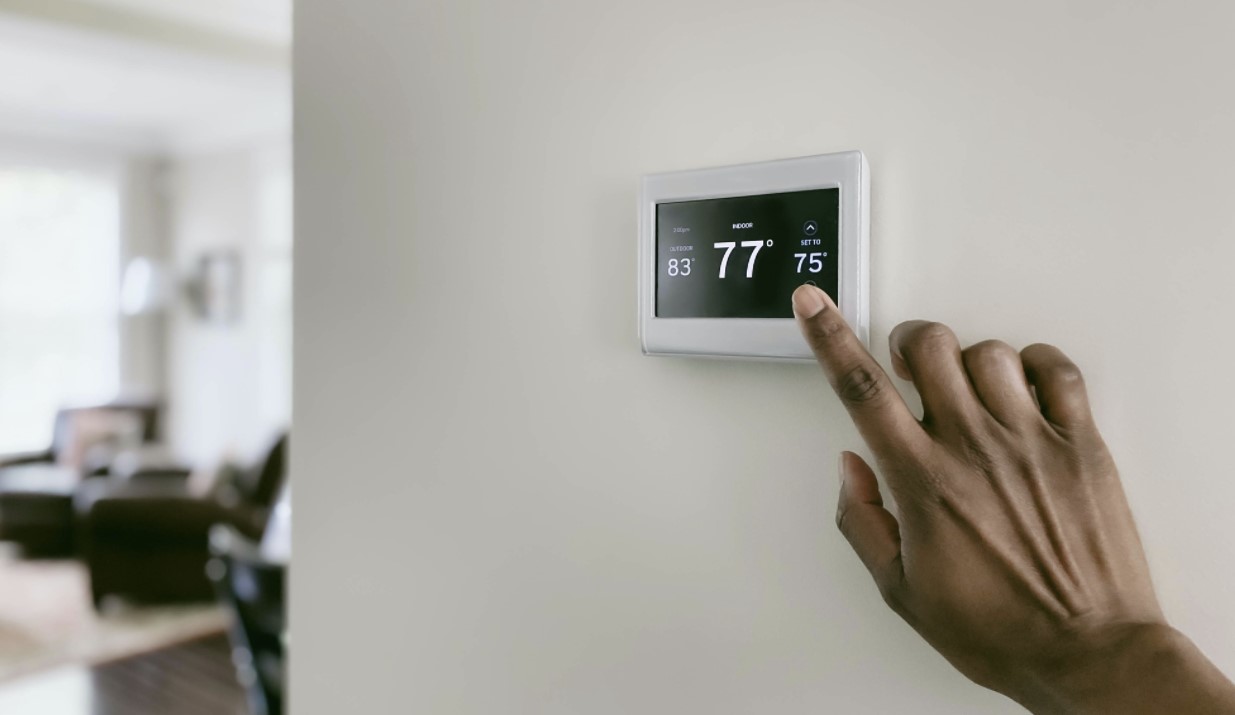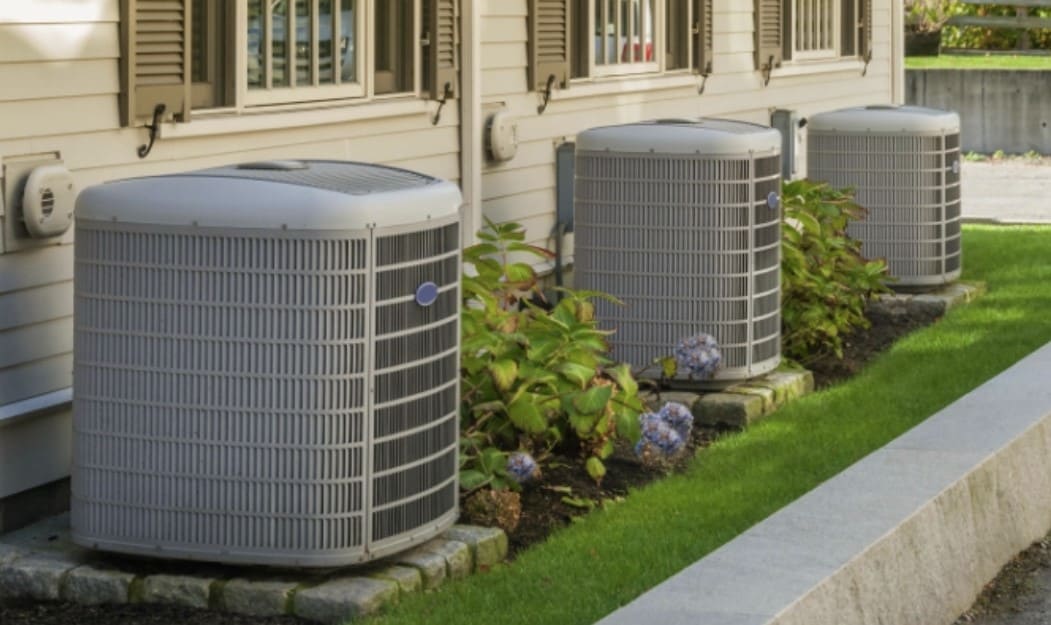The winter season is slowly creeping in on us hence the old-age debate; what is an ideal temperature for the thermostat? Keeping in mind that there is no right or wrong temperature, some acceptable ranges are comfortable and help save energy.
According to the United States Energy Department, the ideal house temperature during winter is 68 Fahrenheit /20 degrees. From there, you can work on finding a happy medium for your whole family’s temperature needs.

It is challenging to drastically change the temperature from what you were used to before winter. So, to combat said challenge, try and adjust the temperature by one degree towards your goal every day for at least two weeks prior.
This way, you will hardly notice the difference and avoid having to crank up the heat as it causes high energy bills.
Contents
Avoid excessive heating
When the weather outside gets chilly, one of your first thoughts will be increasing the temperature to chase maximum comfort. However, this will do much more harm than good.
Setting your thermostat to above 23 degrees is considered excessive and will unknowingly dry out the air by reducing relative humidity.
Ideally, the relative humidity should range from 30 to 60%; otherwise, your electric bills will skyrocket, and the air will be dangerously dry.
I’m using the word dangerous because overly dry air is a fire hazard, especially if you have any open flame sources such as a fireplace. Also, it increases the risk of sickness and skin dehydration.
In such a scenario, many will bring a humidifier into play. Most HVAC systems have a built-in humidifier that works in conjunction with the thermostat to make your home comfortable.
However, using a separate humidifier is not a great option because it will be hard to know the correct settings. Setting it too high will lead to excess humidity, which can cause the growth of mold invents.
Besides mold, it will also increase your energy bills considering humid air is more complicated to warm than regular air.
Invest in a programmable thermostat

Having to adjust the thermostat as per your current needs is time-consuming. Additionally, manually changing the temperature often will cost you more energy.
Therefore, investing in a programmable thermostat is in your best interest. You’re even better off getting one that has a remote sensor. This thermostat will ensure an ideal temperature for each room in your house during winter.
Many affordable and high-end thermostats are designed to adapt to your energy changes and schedule. Here is a brief breakdown of how a programmable thermostat can help.
The temperature will drop to a certain point when you go to bed, say 58 Fahrenheit. You are currently covered in blankets and do not need the additional heat.
A half-hour before your wake-up time, the thermostat will slowly revert to the usual 68 Fahrenheit.
When you leave for work, the temperature drops to a reasonable level, say 50 Fahrenheit, which is not low enough to cause damage.
Thirty minutes before you return from work, the temperature slowly reverts, continuing the cycle.
According to statistics, you can save anything from 5-15% in energy costs by dropping the thermostat temperature when you are not around plus when you are sleeping.
On the other hand, if you do not have a programmable thermostat, you will end up spending more by doing the aforementioned because it takes a lot of energy to cool a house that is cold compared to the gradual heating that will have happened in absentia.
Most programmable thermostats have a location tracker and a phone app where you can input your schedule and that of up to a certain number of family members. Therefore, the temperature will be nice and cozy before anyone of you return.
Alternative thermostat types
Besides programmable thermostats, below are other options you can choose from.
1. Traditional thermostat
Assuming you are on a budget and still need a thermostat, a traditional one is a great option.
However, you will need to input the temperature you want onto the thermostat monitor manually, and it will stay stagnant until you change it yourself. Although it can be a bit tiresome, it works.
For additional measures, try investing in an indoor humidity and temperature monitoring device. This way, you will always know when to adjust.
2. Smart thermostat
If you do not mind spending significantly on a thermostat, go for one in the smart category. If installed and used correctly, a smart thermostat will save you a lot in energy bills as it can be very efficient at its job.
Almost all smart thermostats are fitted with a humidifier that ensures the relative humidity is at the right level for maximum comfort. That is besides maintaining the ideal temperature for your house during winter.
Additionally, you can control them from anywhere in the world as they come with a phone app with more features than any other type.
For example, some of them will notify you when maintenance is due or if a part is faulty. In short, it will do your work as far as thermostats are concerned very quickly.
Confirm the HVAC is working efficiently

All your energy-saving efforts will be futile if your HVAC is not exuding peak performance. First off, confirm that the HVACs filter has been changed or cleaned.
The filters tend to amass dust build-up, which besides causing the HVAC not to function perfectly, causes allergies and can result in a fire. Statistics show that approximately 6000 fires in households start from the HVAC.
Secondly, ensure that every room is well insulated. Faulty weather stripping can cause you up to 30% more in energy costs.
To prevent such a scenario, ensure that the weather stripping around doors and windows in your home is intact.
If not, purchase weather stripping tape from a convenience store and repair all the damaged parts. You can also use a window seal if you own a portable air conditioner.
Finally, if you have experienced that some rooms are colder than others, maybe the problem is you have an air leak from broken ductwork or something else.
If you cannot find the source of the problem, it is probably best to enlist the services of a professional.
In summary, the right temperature to set your house during winter is 68 degrees Fahrenheit /20 degrees Celsius. However, make sure to follow the tips outlined here in order to save on your energy bills while heating your home the right way.
